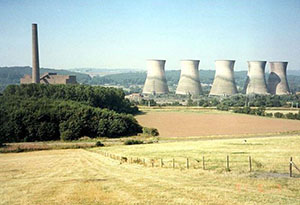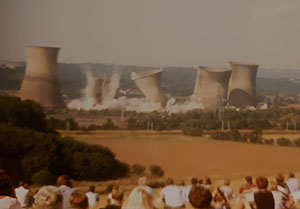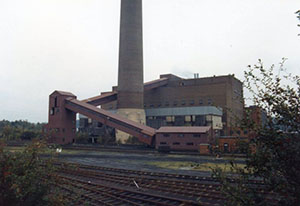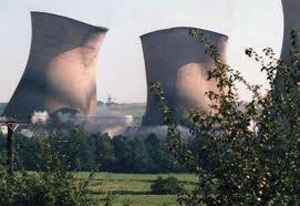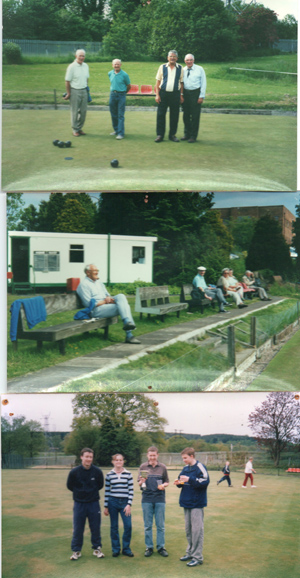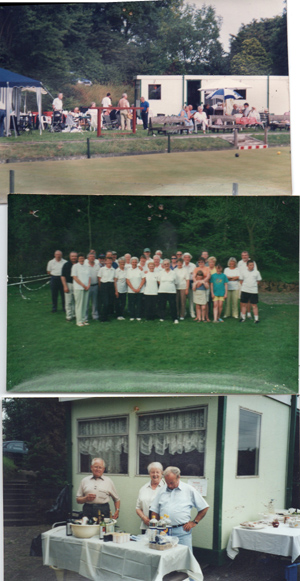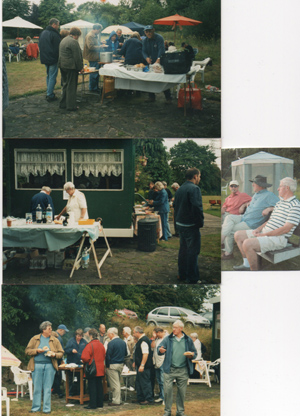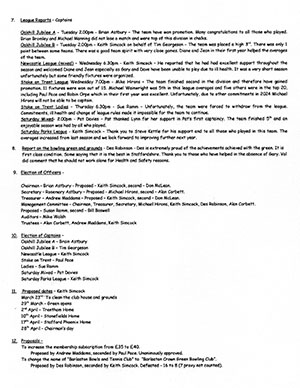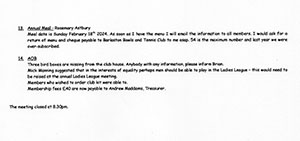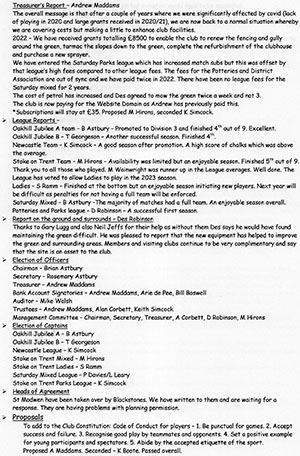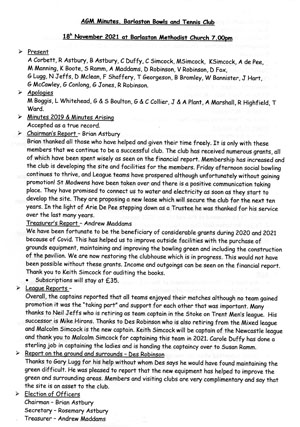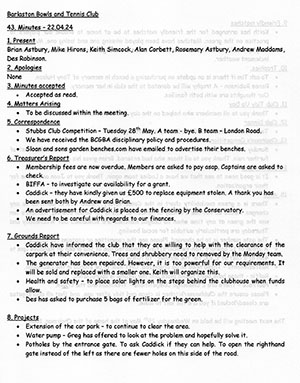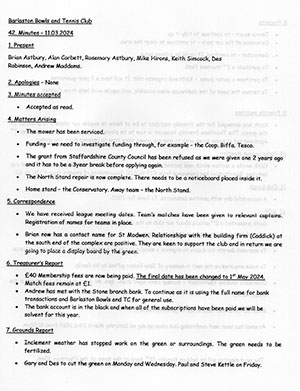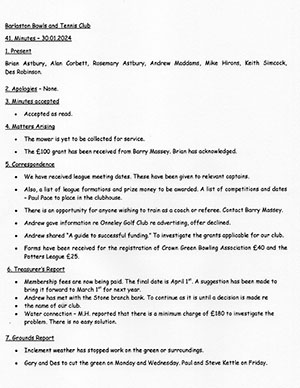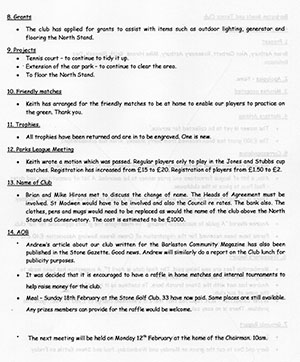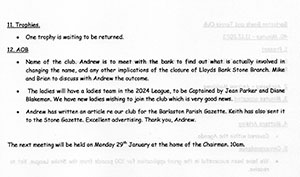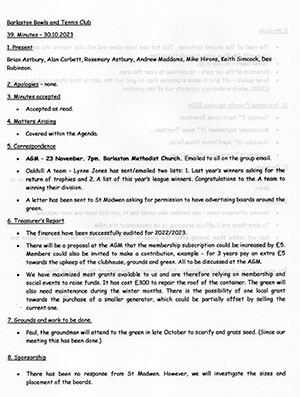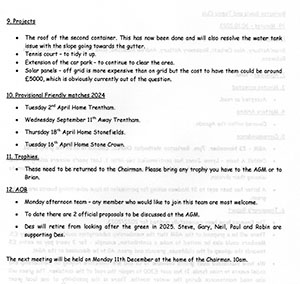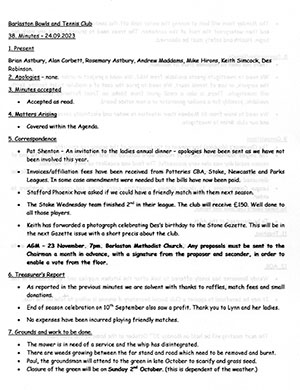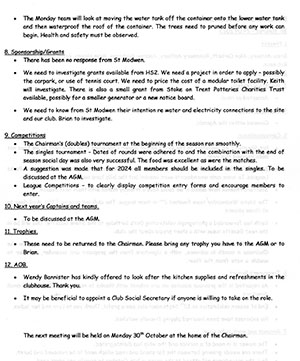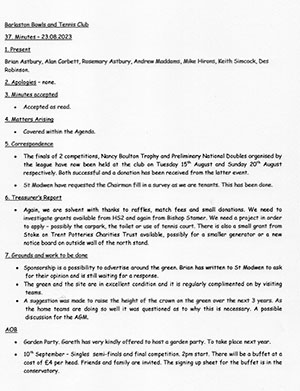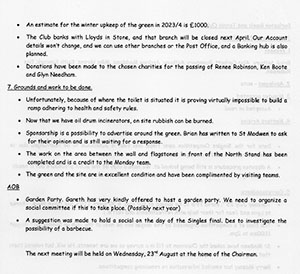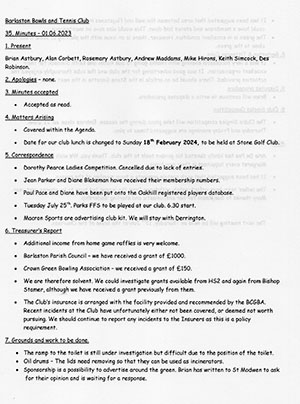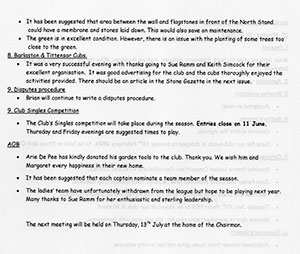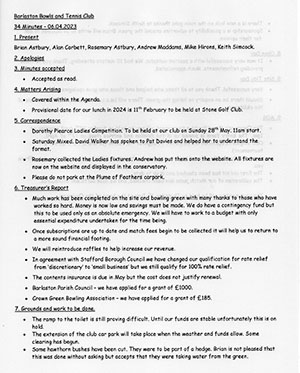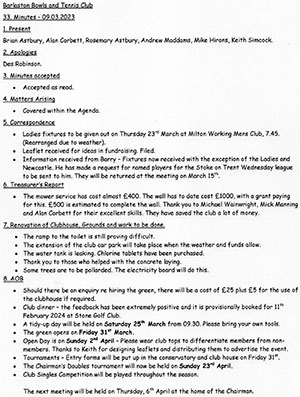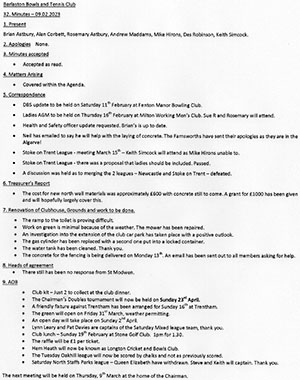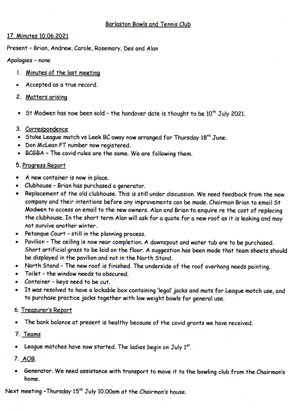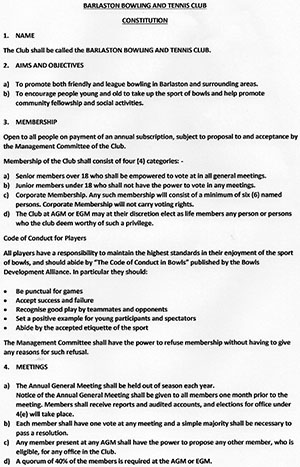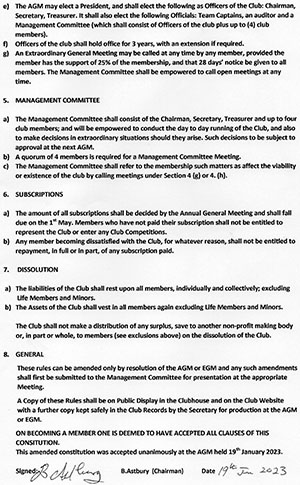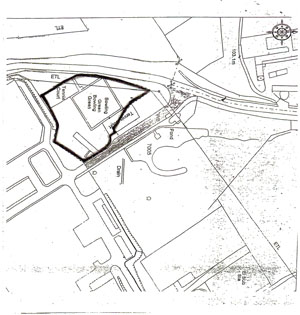
BARLASTON BOWLING AND TENNIS CLUB - HISTORY
'Your community bowling club'
History of Barlaston Bowling and Tennis Club
1) History of the site/Power Station
In the 1930s North Staffordshire and surrounding areas were identified as potentially short of electrical power.
In 1939 the North West Midlands Joint Electricity Authority propose to erect a large generating station on land adjacent to Strongford Sewage Works, but the proposal was rejected.
1947 ‘A’ Station built, officially opens October 20th. It is the first power station in the post-war era. It is sited at Meaford because Barlaston opposes its construction too close to the village. It has two 350 feet chimneys and two 250 feet cooling towers. Many of the workforce have been at the old Stoke power station before being transferred across to new Meaford ‘A’.
1957 With demand for electricity rising there is a need for a ‘B’ Station. It is formally opened on October 4th by H. Wallace Copeland, Lord Lieutenant of Staffordshire.
1960 'A' Station wins the Sir Christopher Hinton ‘Good House-keeping Cup winner, in the Central Electricity Generating Board’s best-kept power station awards.
Both stations generated throughout the 1960s, including the notorious winter of 1962/63 when coal not just froze in the railway wagons but also in the lorries, stockpiles and bunkers, while masses of ice formed in the bases of the five cooling towers, despite 360MW being generated week in, week out.
1974 ‘A’ Station closes.
1982 ‘A’ Station demolished - the demolition of a 385 feet chimney injures three people. Two cooling towers are then interlinked to ‘B’ Station.
1986 ‘B’ Station employs 160 men and generates 240 megawatts of electricity.
1990 out of the blue on September 23rd comes an announcement that ‘B’ Station will cease generation. Operations cease at 1pm on September 28th. One of the first buildings to be demolished is the Sports Club.
1991 Five cooling towers were blown up on September 7th by Fred Ogden and Son of Sheffield; four are blown up at 11.45am, with the remaining tower demolished 30 minutes later. Meaford Road was closed to the public for the occasion between 11.30am and 1pm. Furthermore the A34 was closed for a short time to avoid unsuspecting motorists being shocked by the massive explosions.
1996 Demolition of ‘B’ Station itself is complete by June, with the tall chimney being demolished on June 6.
c2000 ‘B’ substation alone remains along with four bridges over the canal and railway at the rear.
2004 St Modwen purchase the 85-acre site for £2.65 million, and create Meaford Business Park, hoping the development will create 1,000 jobs. But it fails to attract interest because of the credit crunch and recession.
2009/10 ‘B’ substation is refurbished.
2010 ‘A’ Station substantial office buildings were demolished, leaving only the main site gatehouse, ‘C’ substation, the maintenance workshops and the railway bridge over the canal.
2013 Meaford Energy Ltd (a joint venture between Glenfinnan and St Modwen) carry out an initial consultation between September and November for a gas turbine power station (299 MWe) on 30 acres of the site. It will supply power to Western Power Distribution, and take three years and 800 men to build, and give work to 30 people permanently.
2014 Meaford Energy Ltd hold a public consultation period over the summer (plans are shown at Lakeside Tavern on June 11th, 3-8pm), for Meaford Energy Centre.
2015 Meaford Energy Ltd formally apply for planning permission in April. It is forecast to cost £300 million, work to be underway by 2017, and be operational by 2020.
2) History of the Club
As mentioned above, 1991 saw the closure of Meaford Power Station, including the spectacular demolition of five giant Cooling Towers (see photos). The Station's sporting facilities were left to fall into disrepair, and by the end of 1992 the grass on the bowling green was approaching two feet high. A group of volunteers agreed to take over the facilities for the payment of a peppercorn rent, and Barlaston Private Bowling Club was formed. Originally running teams on Wednesdays and Saturdays,this devolved into Barlaston Bowling and Tennis Club under the initial Chairmanship of Clive Evans. In March 1991 the Barlaston Bowling Club (as they were known) received a parish council grant of £1,000 towards the cost of providing a bowling green, with a view to taking the vacated Hockey Pitch at the top of Malthouse Lane, adjacent to the Cricket Field, on termination of the Hockey Club’s lease in March 1991. By Nov 1991 they had decided to stay at the Plume of Feathers. It was considered “there was still an urgent need for a second bowling green in the village following the lost of the Meaford Power Station facility, particularly for the younger and social mixed bowling. It was essential that the long history of bowling be continued in the village.” (Playing Field committee minutes, Nov 1991). By the end of 1992 they had taken over the sports facilities at Meaford Power Station. In March 1995, the Barlaston Bowling and Tennis Club (hitherto titled Barlaston Private Bowling Club) received an equipment/ renovation of grounds grant of £350, towards the estimated costs of £550. In 1999 the Club were looking for "a greensman to cut and tend the bowling green at their Old Meaford Power Station site from March to Sept" and for boys and girls aged between 9-19 to take up Crown Green bowling in the Junior League on Saturday mornings.
Subsequent Chairmen, Roy Finney, Vin Turner,Bill Boswell, and Gareth Jones have seen the Club grow into a thriving institution with a healthy and growing membership, running seven competitive teams, as well as social bowling. Gareth Jones stepped down at the end of 2018 and was replaced by Brian Astbury.
Club Life time members:
Vin Turner
John Plant
Anne Boswell
Bill Boswell
Arie De Pee
Summer BBQs are/were a popular event at the Club, and these scanned photos date from 2003 and 2006. Click on them to see them full-screen, and you may spot some still familar faces!
AGM Minutes November 2023:
AGM Minutes January 2023:
AGM Minutes November 2021:
Review of the 2020 Season letter (No AGM due to COVID):
AGM Minutes November 2019:
Management Committee Minutes:
25.06.24 Pages 1 and 2
29.05.24 Pages 1 and 2:
22.04.24 Pages 1 and 2
11.03.24 Pages 1 and 2
30.01.24 Pages 1 and 2
11.12.23 Pages 1 and 2
30.10.23 Pages 1 and 2
20.09.23 Pages 1 and 2
23.08.23 Pages 1 and 2
25.07.23 Pages 1 and 2
01.06.23 Pages 1 and 2
06.04.23 Pages 1 and 2
09.03.23
09.02.23
12.01.23
15.12.22 Pages 1 and 2
20.10.22 Pages 1 and 2
08.09.22 Pages 1 and 2
28.07.22 Pages 1 and 2
09.06.22 Pages 1 and 2
11.04.22 Pages 1 and 2
08.03.22 Pages 1 and 2
04.02.22
13.01.22 Pages 1 and 2
28.10.21
24.09.21
12.08.21
15.07.21 pages 1 and 2
10.06.21
06.05.21 pages 1 and 2
31.03.21 pages 1 and 2
07.10.20 Only Page
09.09.20 Only Page
05.08.20 Only Page
18.03.20 Only Page
19.02.20 pages 1 and 2
07.01.20 pages 1 and 2
30.10.19 pages 1 and 2
04.09.19 pages 1 and 2
03.07.19 pages 1 and 2
01.05.19 pages 1 and 2
13.03.19 pages 1 and 2
30.01.19 pages 1 and 2
09.01.19
05.12.18 page 1 and 2:
Club Constitution (Revised Jan 2023):
Club Lease with St Modwen:
Crown Green Bowls
Crown Green bowls…a short history of
The game of Crown Green Bowls originated in Lancashire and is becoming an increasingly popular alternative to traditional lawn bowls. It is still most popular in the north of England and the West Midlands but is also played in North Wales, Scotland and Isle of Man and is spreading to other counties in England as well. In 1893 inter county matches started to take place but it was considered an amateur sport only and there was no prize money allowed. The British Crown Green Bowling Association was later founded in 1908. Crown Green Bowling teams are often affiliated to pubs and the county associations have in recent years increased from 10 – 16.
…play
Is usually played as “singles” however bowlers may also participate in “doubles” and “pairs” games. This game has more dimensions than traditional lawn bowls due to the green on which the game is played. The green is square grass covered surface (approx 40 yds) with a slight raise in the middle usually (9 – 15 inches high) (known as the “crown”). There is a ditch surrounding the green which is the borderline for play.
Crown Green bowls…the bowls, the jack and the kitty
As in lawn bowls, the bowls ball used in Crown Green Bowling has a bias which means that when rolled its travel is not necessarily straight depending on how the shot is played. Bowlers usually have bowls weighing between 2.4 – 2.14 pounds. The exact weight is a personal preference but they must ensure that it is over the minimum weight of 2 pounds. The jack is a small yellow or black ball which also has a bias and is the target for the bowls to be directed at for the game.
…the rules and reg’s
Crown green bowls varies to lawn bowls, the main difference being that play takes place in any direction on the green rather than in straight lines (known as rinks in lawn bowls). Because of this, multiple games will take place on the same green at the same time, often crossing other team’s game path.
To start the game, a footer is placed at the edge of the green and the jack is rolled anywhere on the green. When rolling the jack the player must have 1 foot placed on the footer and bowl with the same hand as the foot that is placed. The player then takes their first bowl aiming to get their bowl as close to the “jack” as possible.
In the more widely played “singles” game, each player has 2 bowls and rolls alternatively In “doubles” or “pairs” games one person from each side rolls both their bowls, followed by a person from the other side that does the same. Then the other 2 further players also bowl.
The winner of that game or “end” then places their footer within 1 metre of where the jack lay and rolls the jack out on the green again. This can again be in any direction but must not be within 1 metre of the edge of the green. If the jack is hit off the green by a bowl then the end is considered “dead”. The footer is then replaced 1 metre onto the green at the place where the jack was sent off and is rolled again. If a bowl is hit off then that bowl is considered “dead” and out of play.
As simultaneous games are played on a Crown bowls green there are rules if disturbance occurs during play. If a running bowl or Jack is likely to hit another bowl from another game, the running jack or ball should be stopped and returned for re-play If there is any accidental disturbance of a stationary bowl or jack then the jack is replaced where the jack originally lay. If the players can not agree where this was then the game is classed as dead.
…the shots
As in lawn bowls, bowlers playing Crown Green bowls have different techniques. Some people prefer playing over the raised level whilst others prefer the side alleys. The bowl has less bias when played against the slope of the green so some players opt to play using this dimension of the green rather than the “crown”.
Crown Green Bowls…the scoring
Measuring takes place as the end (game) is complete and points are awarded for any bowls closer to the jack than their opponents Crown Green bowls games usually play to 21 points.





















 1
1 2
2 3
3 4
4 5
5 6
6 7
7 8
8 9
9 10
10 11
11 12
12 13
13 14
14

